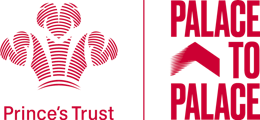Cycling safety
As a Palace to Palace rider, your safety is very important to us. We recommend you check out these rules, taken from the Highway Code, before you head out to train for Palace to Palace.
Clothing
- Wear a cycling helmet which conforms to current regulations – make sure it’s the correct size and is securely fastened
- Wear appropriate clothing – avoid dark coloured clothes and clothes which may get tangled or obscure your lights
- Wear reflective or fluorescent clothing/ accessories e.g. belt, arm or ankle bands
- Do not wear anything which may obstruct your balance e.g. it wouldn’t be sensible to carry home a week’s worth of shopping on your bike.
On the road
- Use cycle routes, dedicated cycling tracks, advanced stop lines, cycle boxes and toucan crossings unless at the time it is unsafe to do so
- Cycling lanes are marked by a white line (which may be broken) along the carriageway. When using cycling lanes, keep within the lane when practical. When leaving a cycle lane, ensure that you’ve checked it is safe do so and signal your intention to other road users
- You must NOT cycle on the pavement
- Most bus lanes can be used by cyclists as indicated on signs. Watch out for people getting on or off a bus. Be very careful when overtaking a bus or leaving a bus lane as you will be entering a busier traffic flow. For your own safety, do not pass between the kerb and a bus when it is at a stop.
Riding your bike
- Keep both hands on the handlebars apart from when you’re signalling or changing gear
- Keep both feet on the pedals
- Never ride more than two abreast, and ride in single file on narrow or busy roads and when riding round bends
- Do not ride close behind a vehicle
- Be considerate of other road users, particularly those with visual impairments. Use your bell if necessary to let them know you are there
- Look all around before moving away from the kerb, turning or manoeuvring, to make sure it is safe to do so. Give a clear signal to show other road users what you intend to do
- Look well ahead for obstructions in the road, such as drains, pot-holes, speed humps and parked vehicles so that you do not have to swerve suddenly
- Be aware of traffic coming up behind you
- Obey all traffic signs and traffic light signals.
Parking your bike
- Find a location where it can be seen by passers-by
- Use cycle stands or other cycle parking facilities wherever possible
- Do not leave it where it would cause an obstruction or hazard to other road users
- Secure it well so that it will not fall over and become an obstruction or hazard.

